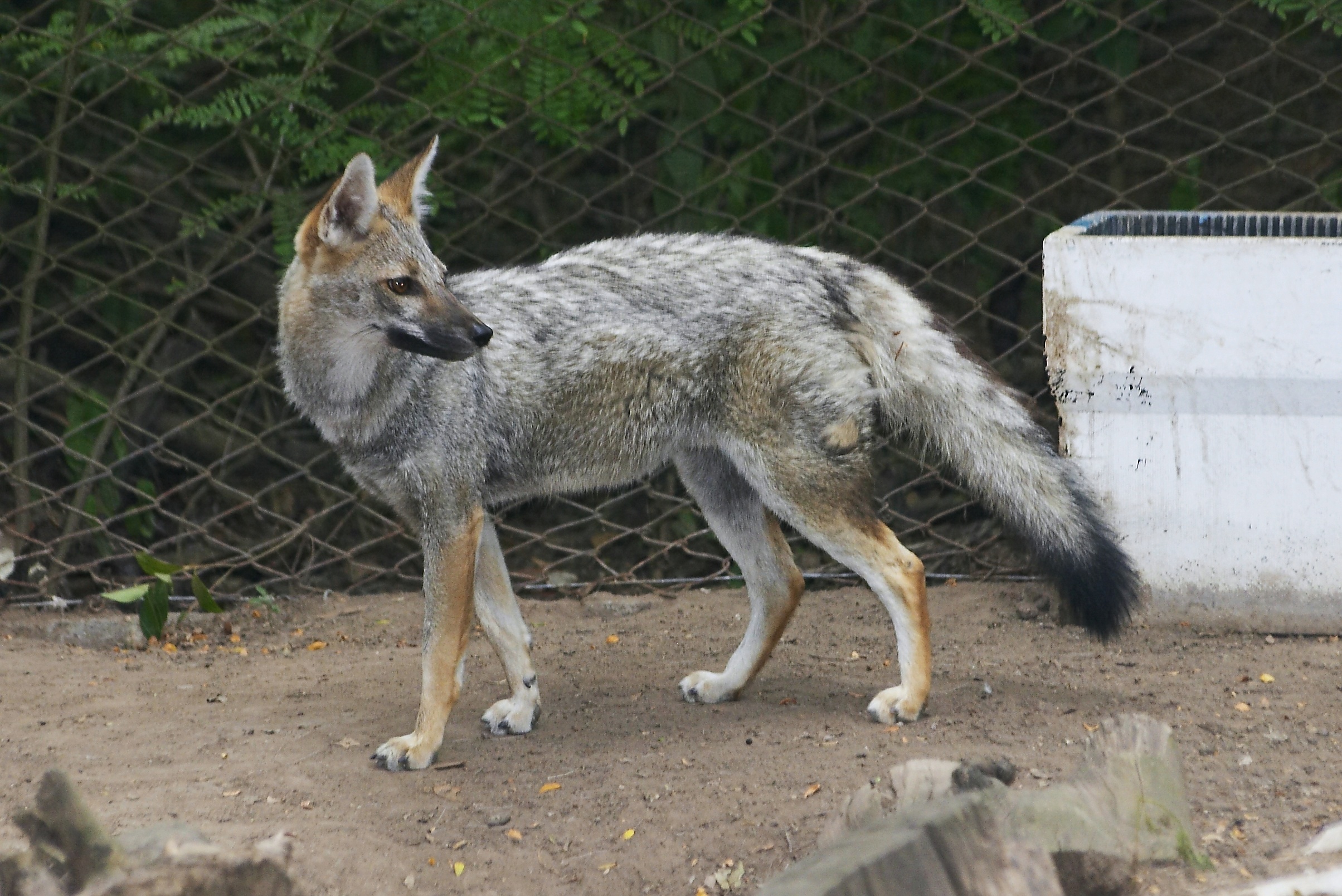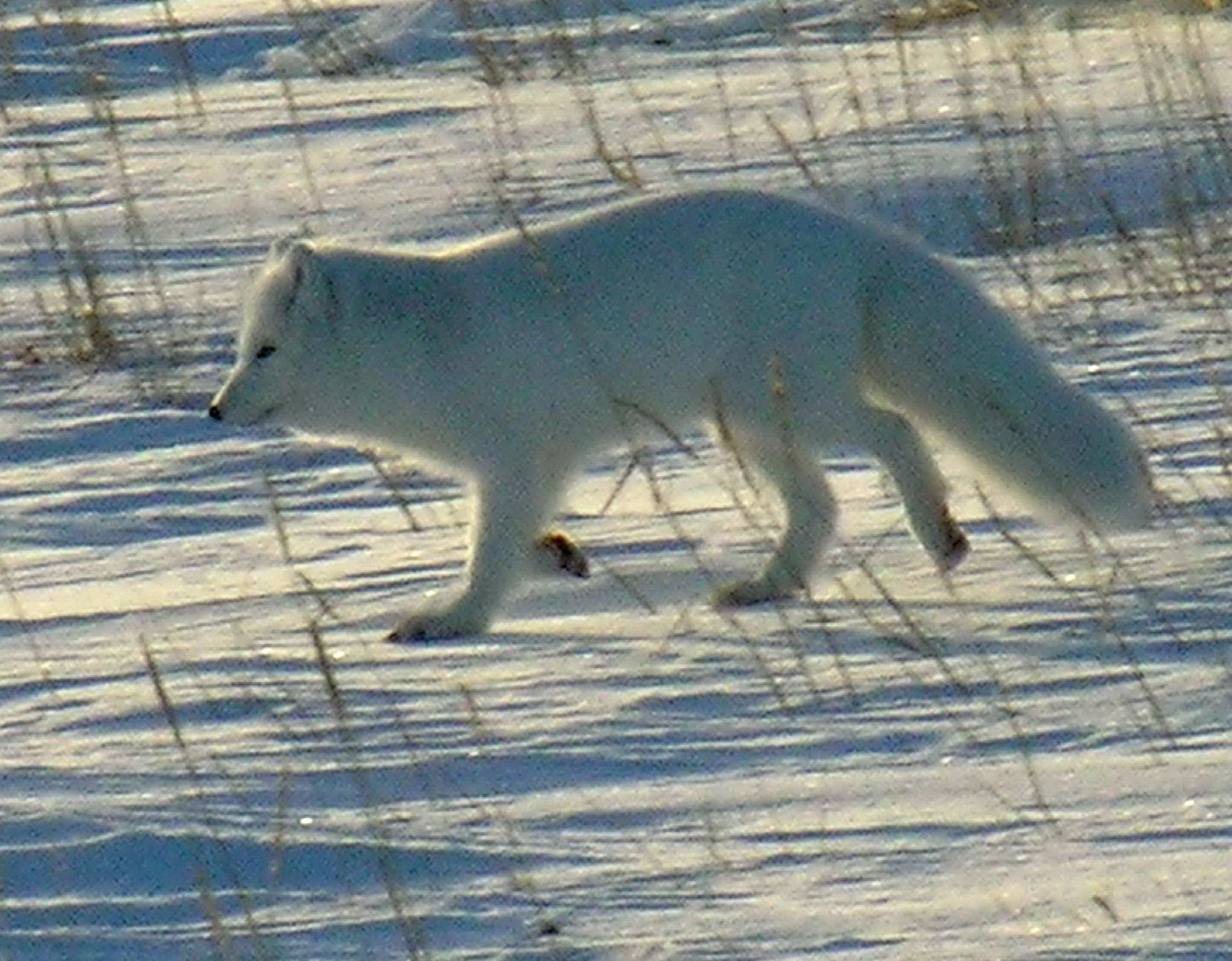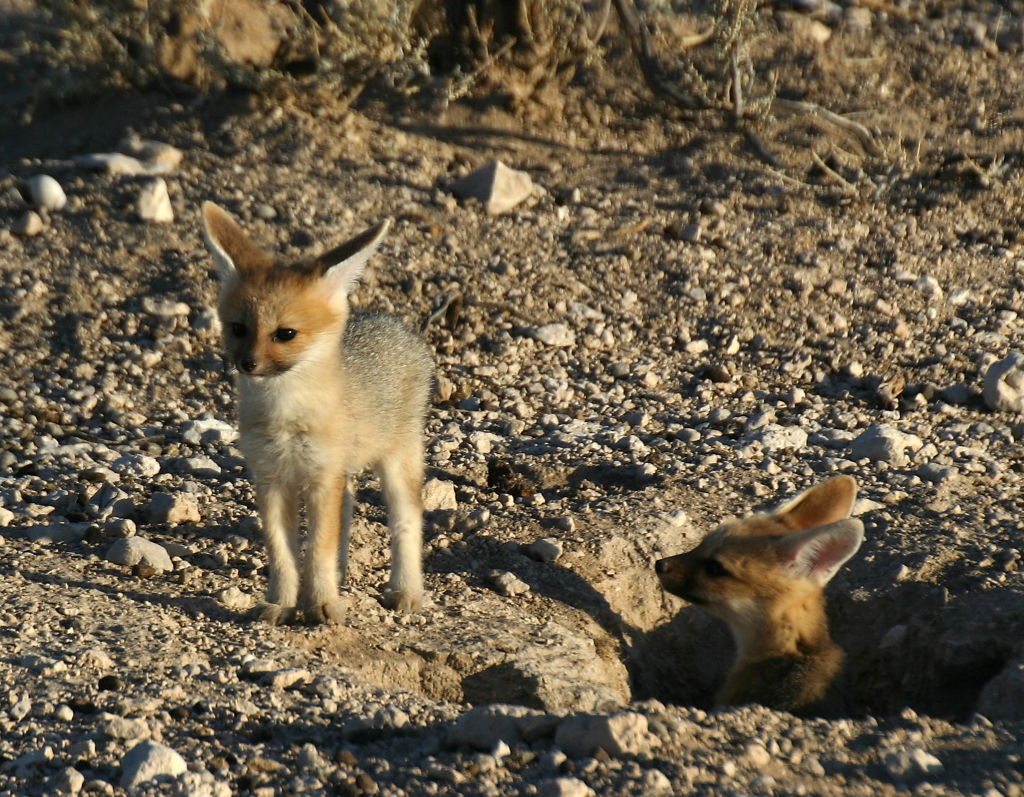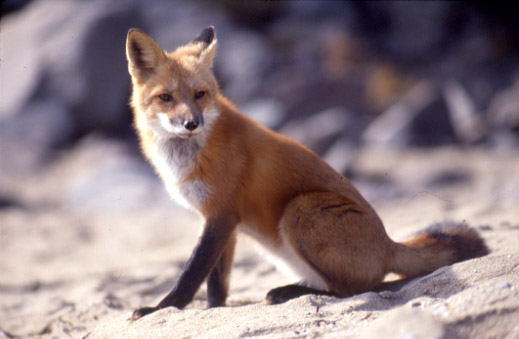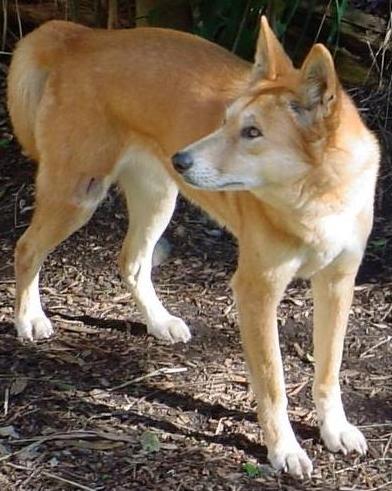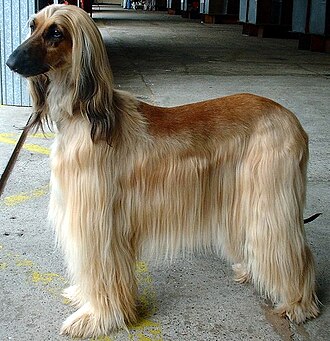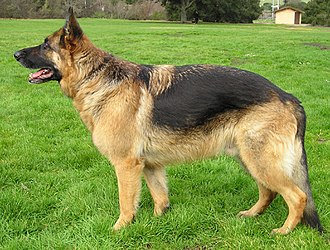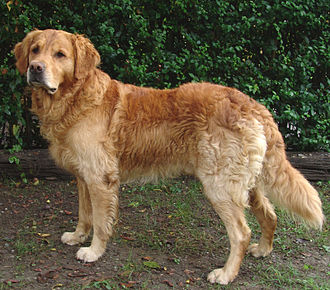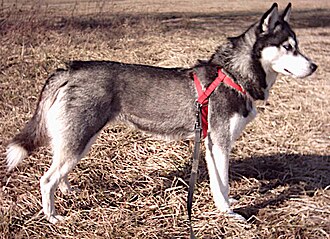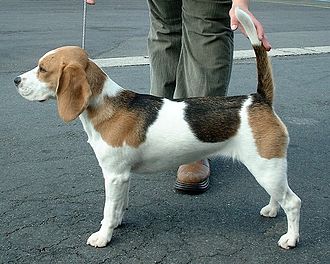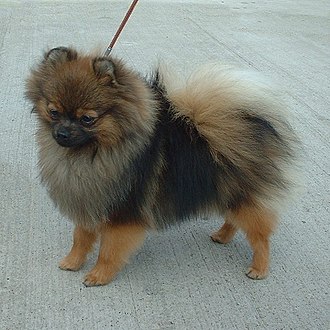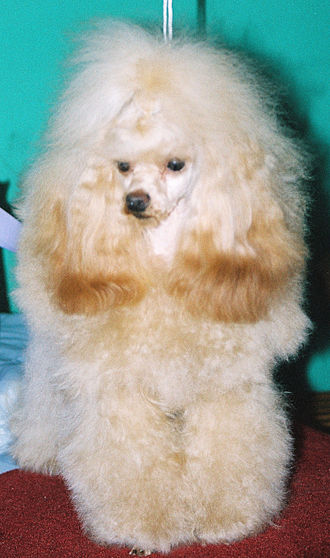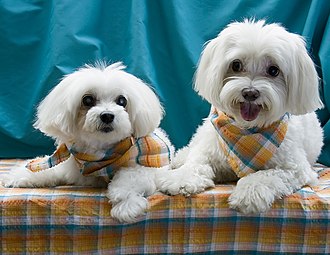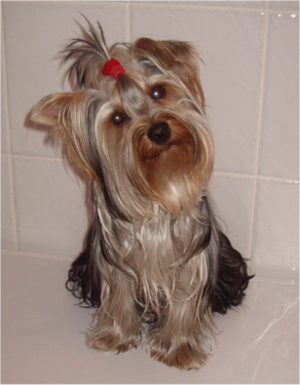Difference between revisions of "AY Honors/Dogs/Answer Key"
| Line 90: | Line 90: | ||
{{Breed id | {{Breed id | ||
| name = Afghan Hound | | name = Afghan Hound | ||
| − | | image = | + | | image = Afghan Hound.jpg |
| − | | description = | + | | description = The Afghan Hound is a very old sighthound dog breed. Distinguished by its thick, fine, silky coat and its tail with a ring curl at the end, the breed acquired its unique features in the cold mountains of Afghanistan, where it was originally used to hunt wolves, foxes, and gazelles. |
}} | }} | ||
| Line 105: | Line 105: | ||
| description = The Golden Retriever is a popular breed of dog, originally developed to retrieve downed fowl during hunting. It is one of the most common family dogs as it is easy to handle, very tolerant and normally very happy and friendly. They are a low-maintenance dog and thrive on attention, regular exercise, a balanced diet, and regular veterinary check-ups. Golden Retrievers are usually compatible with all people and other dogs. | | description = The Golden Retriever is a popular breed of dog, originally developed to retrieve downed fowl during hunting. It is one of the most common family dogs as it is easy to handle, very tolerant and normally very happy and friendly. They are a low-maintenance dog and thrive on attention, regular exercise, a balanced diet, and regular veterinary check-ups. Golden Retrievers are usually compatible with all people and other dogs. | ||
}} | }} | ||
| − | |||
| − | |||
| − | |||
| − | |||
| − | |||
| − | |||
{{Breed id | {{Breed id | ||
| name = Siberian husky | | name = Siberian husky | ||
| − | | image = | + | | image = Husky L.jpg |
| − | | description = | + | | description = The Siberian Husky is a working dog breed that originated in eastern Siberia. The Siberian Husky is a medium-sized dog. Siberian Huskies are a resilient breed; known for their ability to thrive in the arctic cold, they can work and live in temperatures as low as negative 75 degrees Fahrenheit (-60ºC). They were originally bred by the Chukchi tribes for use as a village dog to accomplish such tasks as pulling sleds. |
}} | }} | ||
| Line 122: | Line 116: | ||
{{Breed id | {{Breed id | ||
| name = Beagle | | name = Beagle | ||
| − | | image = | + | | image = Beagle 600.jpg |
| − | | description = | + | | description = A Beagle is a medium-sized dog breed and a member of the hound group, similar in appearance to a Foxhound but smaller with shorter legs, and with longer, softer ears. Beagles are scent hounds used primarily for tracking deer, bear, and other game. They are a loyal breed and most often very well tempered. Beagles love exercise and being around people. |
}} | }} | ||
Revision as of 01:16, 8 March 2007
1. Give the scientific name of the dog family.
The scientific name of the dog family is Canidae.
2. Name five distinctive characteristics of the dog family.
3. Identify from pictures or personal observation five wild members of the dog family.
Gray Fox (Urocyon cinereoargenteus)
Description: The gray fox is small and has a pepper brown back, tawny sides, neck and legs, a white belly, and a black stripe along its back and tail. Another black stripe crosses its face from the nose to the eye and continuing to the side of the head. Standing about 12-16 inches at the shoulders, weighing up to 16 pounds and having an overall body length of up to 47 inches, the gray fox is an agile canid able to scurry up and down trees with relative ease.
Arctic Fox (Alopex lagopus)
Description: The Arctic fox, also known as the polar fox, is a small fox native to cold Arctic regions of the Northern Hemisphere. Arctic foxes will eat pretty much anything. Their prey includes voles, lemmings, hares, ground squirrels, and bird eggs. Foxes living on the coast also eat shellfish, sea urchins, dead seals and fish, beached whales, and nesting seabirds. In winter when food is scarce, they may follow a polar bear and after the bear makes a kill, eats and leaves, they will steal what ever scraps of meat are left. In winter, their light coat protects them from predators, esp. polar bears, by blending in to the white snow.
Pale Fox (Vulpes pallida)
Description: The Pale Fox is a species of fox which inhabits the Sahel from Senegal in the west to Sudan in the east. It is widespread throughout the Sahel but its environmental status is described as "data deficient" due to lack of intensified study of the pale fox in the wild. The pale fox is long-bodied with relatively short legs and a narrow muzzle. Its ears are long and rounded at the tip. Its tail is bushy and black-tipped. The upperpart of its body has a pale sandy color, while the underpart is whitish. A dark ring surrounds the fox's eyes.
Cape Fox (Vulpes chama)
Description: The Cape Fox has black or silver gray fur with flanks and underside in light yellow. The tip of its tail is always black. The Cape Fox is found in Southern Africa from Zimbabwe to Angola. It prefers the open savanna and semi-arid regions in southwestern Africa, from Southern Zimbabwe to the Cape province.
Red Fox (Vulpes vulpes)
Description: The Red Fox is the most familiar of the foxes. In Britain and Ireland, where there are no longer any other native wild canids, it is referred to simply as the "Fox". It has the widest range not just of any fox but of any terrestrial carnivore. As its name suggests, its fur is predominantly reddish-brown
Gray Wolf (Canis lupus)
Description: The Gray Wolf, also known as Timber Wolf or Wolf, shares a common ancestry with the domestic dog (Canis lupus familiaris), as evidenced by DNA sequencing and genetic drift studies. Gray wolves were once abundant and distributed over much of North America, Eurasia, and the Middle East. Today, for a variety of human-related reasons including widespread habitat destruction and excessive hunting, wolves inhabit only a very limited portion of their former range. Though listed as a species of least concern for extinction worldwide, for some regions including the Continental United States, the species is listed as endangered or threatened.
Coyote (Canis latrans)
Description: Coyotes are native to North America and are found from Alaska, U.S. to as far south as Panama. European explorers first encountered these canines during their travels in the American Southwest. They may occasionally assemble in small packs, but naturally hunt alone. Coyotes live an average of about 6 to 10 years.
Dingo (Canis lupus dingo)
Description: The dingo is a type of wild dog, probably descended from the Indian Wolf (Canis lupus pallipes). It is commonly described as an Australian wild dog, but is not restricted to Australia. Modern dingoes are found throughout Southeast Asia, mostly in small pockets of remaining natural forest, and in mainland Australia, particularly in the north.
Golden Jackal (Canis aureus)
Description: The Golden Jackal has golden reddish-yellow fur with a white mark on the throat, but the color can vary with age, region and season; in winter the coat darkens. Typical body length is 70-85 cm and height is 40 cm. It can weigh as little as 8 kg and much as 10 kg. Males tend to be larger than the females.
Canis adustus
Side-striped jackal (Canis adustus)
Description: Side-striped jackal is a greyish brown to tan with a white stripe from the front legs to the hips and has a dark tail that has a white tip. Side-striped jackal can weigh from 14 to 30 lb. Males tend to be larger than the females. They are social within small family groups, communciating via yips, "screams" and a soft owl like hooting call. They are nocturnal, and rarely active during the day.
Canis mesomelas
Black-backed jackal (Canis mesomelas)
Description: The Black-backed jackal (Canis mesomelas) is an African canine with a fox-like appearance, tan fur, and a thick stripe of black and silver running down its back. They weigh anywhere from 15 to 30 pounds and are 15 to 30 centimeters at the shoulder. Males are usually larger than females.
4. Identify from pictures or personal observation 25 different breeds of dogs.
Afghan Hound
The Afghan Hound is a very old sighthound dog breed. Distinguished by its thick, fine, silky coat and its tail with a ring curl at the end, the breed acquired its unique features in the cold mountains of Afghanistan, where it was originally used to hunt wolves, foxes, and gazelles.
German Shepherd
German Shepherds (or Alsatians) are highly intelligent, agile and well-suited to active working environments. They are often deployed in various roles such as police work, guarding, Search and Rescue, Therapy and in the military. They can also be found working as guide dogs for the blind. Despite their suitability for such work, German Shepherds can also make loyal and loving pets inside the home. They enjoy being around people and other animals.
Golden Retreiver
The Golden Retriever is a popular breed of dog, originally developed to retrieve downed fowl during hunting. It is one of the most common family dogs as it is easy to handle, very tolerant and normally very happy and friendly. They are a low-maintenance dog and thrive on attention, regular exercise, a balanced diet, and regular veterinary check-ups. Golden Retrievers are usually compatible with all people and other dogs.
Siberian husky
The Siberian Husky is a working dog breed that originated in eastern Siberia. The Siberian Husky is a medium-sized dog. Siberian Huskies are a resilient breed; known for their ability to thrive in the arctic cold, they can work and live in temperatures as low as negative 75 degrees Fahrenheit (-60ºC). They were originally bred by the Chukchi tribes for use as a village dog to accomplish such tasks as pulling sleds.
Beagle
A Beagle is a medium-sized dog breed and a member of the hound group, similar in appearance to a Foxhound but smaller with shorter legs, and with longer, softer ears. Beagles are scent hounds used primarily for tracking deer, bear, and other game. They are a loyal breed and most often very well tempered. Beagles love exercise and being around people.
Collie
Boxer
Bulldog
Dalmatian
Saluki
Saint Bernard
Great Dane
Maltese
Basenji
Bernese Mountain dog
Borzoi
Whippet
Australian Shepherd
Vizsla
Daschund
Greyhound
Harrier
Labrador Retriever
5. Name five contributions the dog family has made to man.
6. Give the name of the smallest and largest breed of dog.
The smallest breed of dog is the Chihuahua. Many breeds can claim to be the "largest" depending on how "largest" is defined. The tallest is the Irish Wolfhound, but it is outweighed by the Mastiff, the Great Dane, and the Saint Bernard. The heaviest of these is the Saint Bernard.
7. Write or describe orally the value to man of the following dogs:
a. Seeing-eye
b. Saint Bernard
The ancestors of the St. Bernard are the herding dogs of Swiss farmers as well as hunting dogs and watchdogs. Their history has also been connected with the hospice at the Great St. Bernard Pass.
The most famous Saint Bernard to save people at the pass was Barry, who reportedly saved somewhere between 40 and 100 lives. There is a monument to Barry in the Cimetière des Chiens, and his body was preserved in the Natural History Museum in Berne, Switzerland.
The classic St. Bernard looked very different from the St. Bernard of today, but an avalanche killed off many of the dogs used for breeding. Breeders crossed the remaining dogs with other dogs, but in the process they lost much of their use as rescue dogs.
c. Shepherd
d. Collie
e. Eskimo
8. Write or tell what special contribution dogs have made to man in wartime.
9. Identify from pictures or personal observation five dogs that are classed as "toy" dogs.
Pomeranian
The head of the Pomeranian is wedge-shaped, making it somewhat foxy in appearance. The ears are small and set high. Its tail is characteristic of the breed and should be turned over the back and carried flat, set high. The Pomeranian is a very active dog who is intelligent, courageous, and a loyal companion. But due to its small size can suffer abuse from children. Beneath the Pomeranian's fur is a small but muscular dog, similar to a Chihuahua.
Chihuahua
Chihuahuas are best known for their large eyes; small size; and large, erect ears. Chihuahuas are prized for their devotion, ferocity and personality. Their curious nature and small size make them easily adaptable to a variety of environments, including the city and small apartments. Chihuahuas are often stereotyped as high-strung, though it has been shown that correct training and socialization can result in an outstanding companion animal.
Toy Poodle
Poodles are intelligent, alert, and active. Arguably one of the most intelligent breeds, their aptitude has made them ideal for performing in circuses across the globe for centuries. Because they are so intelligent, they can become bored easily, and can get quite creative about finding mischief.
Maltese
The Maltese is covered from head to foot with a mantle of long, silky, white hair. Adult Maltese range from roughly 3 to 10 lb (1.4 to 4.5 kg)
Yorkshire terrier
This long-haired terrier is known for its playful demeanor and distinctive blue and tan coat. Yorkies can be very small, usually weighing between 5 and 7 pounds (2.5 to 3.5 kilograms).
10. What is the only dog that has a wholly blue or black tongue?
The Chow chow.
11. Which is the fastest-running dog?
The Saluki is the fastest-running dog.
12. Which member of the "toy" dogs has become the most popular?
The Yorkshire Terrier has perhaps become the most popular.
13. What dog has been especially helpful in tracking criminals?
The Bloodhound has been used extensively to track the scent not only of criminals, but also of lost children and even adults suffering from dementia.
